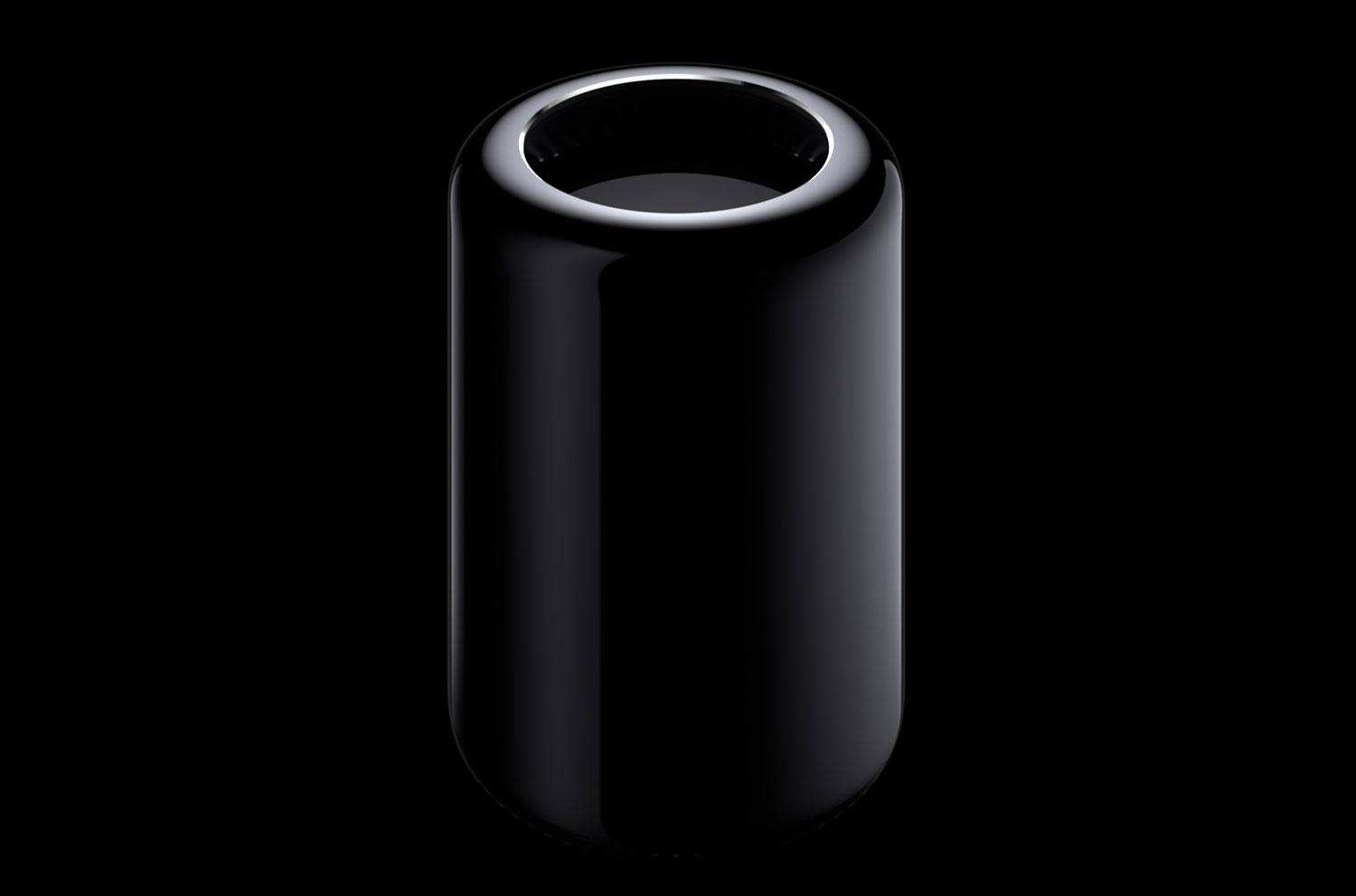
It’s finally here. We’ve been waiting for Apple’s new high-end Mac for a lifetime. But is Apple’s newest Mac Pro worth the wait?
Apple’s Mac Pro range is designed for high-power users. The iMac does have the advantage of having a built-in screen and coming bundled with a keyboard and mouse, all of which you have to supply yourself if you buy a Mac Pro, but the latter has a heck of a lot more extreme power.
At first glance, the most striking thing about the new Mac Pro is the radical redesign of its casing. It’s just 9.9 inches tall and just over 6.5 inches in diameter. By volume, it’s an eighth the size of the previous-generation Mac Pro and only a little over a quarter of the weight. It’s sleek, smart and beautifully petite. But its smaller size doesn’t mean it puts in a pint-sized performance…
It features the latest Intel Xeon processors, quad-core or six-core off the shelf. Eight-core and 12-core processors are available as custom options if you buy from the Apple Online Store, but there’s no option for two processors. Its two AMD FirePro GPUs deliver up to eight times the graphical performance of the previous-generation Mac Pros.
Unsurprisingly given its compact size and the way Macs have developed over the last few years, storage is solid state. Equally unsurprisingly, there’s no optical drive. If you still use CDs and DVDs, you’ll have to invest in a USB SuperDrive or similar external disc drive.
At the heart of the new Mac Pro is the thermal core, a unified heat sink around which the processor board and two graphics processor boards are attached. Where the previous Mac Pro had eight separate fans, the new Mac Pro only has one. It draws air through the base and out through the top of the casing, over the heat sink that stretches from the top of the Mac Pro to the bottom. Meaning it runs very quietly. The 2013 Mac Pro is designed to be used on top of your desk, not underneath it, and its quiet running, attractive casing and minimal footprint means it’s welcome to do just that.
Apple is known for its delightful design features, and the new Mac Pro is no exception. Turn the Mac Pro to get at the expansion ports around the back (as far as a cylindrical casing can be said to have a ‘back’), and they all light up. Even if the Mac Pro isn’t currently powered up, the ports are lit so you can plug in or disconnect peripherals. Leave it still for a few seconds, and the light fades to off again. Very smart.
 According to Apple, the new Mac Pro ‘redefines what it means to be expandable’. Most of the Mac Pro’s main expansion options are geared around external peripherals, so it has an excellent range of data ports. There are four high-speed USB 3.0 ports, and six – yes, six – Thunderbolt ports. These are based on the new Thunderbolt 2 protocol, which combines the two 10Gbs channels offered by first-generation Thunderbolt into one 20Gbs bi-directional channel, making it ideal for streaming large amounts of data.
According to Apple, the new Mac Pro ‘redefines what it means to be expandable’. Most of the Mac Pro’s main expansion options are geared around external peripherals, so it has an excellent range of data ports. There are four high-speed USB 3.0 ports, and six – yes, six – Thunderbolt ports. These are based on the new Thunderbolt 2 protocol, which combines the two 10Gbs channels offered by first-generation Thunderbolt into one 20Gbs bi-directional channel, making it ideal for streaming large amounts of data.
There’s also a HDMI port and two Gigabit Ethernet sockets, while for wireless connectivity, there’s 802.11ac Wi-Fi and Bluetooth 4.0.
The solid state drive can be removed and slotted into a different Mac Pro. If you have a Mac Pro at home and another at work, you can use the same SSD in both, effectively carrying your computer in your pocket with minimal disassembly.
True to form, performance is excellent. The new 2013 Mac Pro can drive up to three 4K monitors at once. That’s three screens, each with a pixel resolution of 3840×2160, four times that of high-definition 1080 screens.
It’s a masterpiece of engineering and suitably expensive. Fresh ideas such as the unified thermal core and
backlit expansion ports together with high-performance components combine to make the Mac Pro the ultimate
high-end workhorse.”
